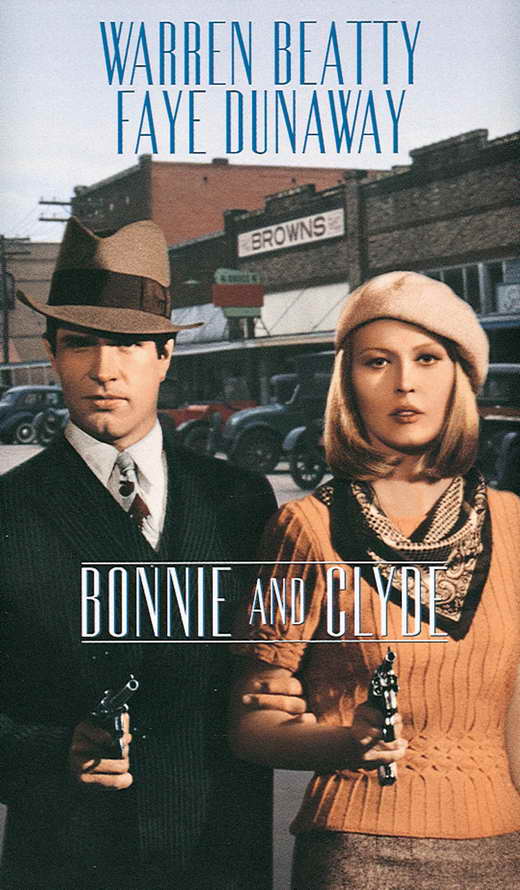
Arthur Penn's Bonnie and Clyde was one of the first films to break the production code era's taboo on gore and graphic violence. Of course, Bonnie and Clyde is more than just bloody bullet holes. It is actually a somewhat subversive film that follows a dust bowl Robin Hood and Maid Marian while they recruit disciples and stuff their pockets all while taking care not to exploit the impoverished.
The film takes place during the depression and FDR campaign posters are prominently displayed throughout the film. Beatty's Clyde Barrow is morally opposed to taking money from the poor, but morally inclined to take money from the banks. From the scene where he allows the sharecroppers' whose home was foreclosed by the bank to shoot up the place, Beatty's Clyde proves himself a 20th century Robin Hood. Of course, historical proof probably is inclined otherwise.

Penn's Bonnie and Clyde are not meant to be historically accurate portrayals, though. The film was released in 1967 at the heart of the so-called "Summer of Love," when the American counter-culture was possibly at its most strong. Additionally, Hollywood was suffering a lull. The supposedly depression-proof industry was suffering because they had failed to produce many memorable films during the production era (other than a handful of film Noir classics).
The ending scene of Bonnie and Clyde is considered a classic and I will spoil it for you: they get filled with bright red bullet holes. Even after reading these spoilers, the film is worth watching. It was the harbinger of a renaissance in cinema. Soon after Roger Corman, Peter Fonda and Dennis Hopper as well as Robert Downey's crew had shot some brilliant films inspired by the indulgences explored by Beatty's Bonnie and Clyde. Bless Beatty and Penn!
Trailer:
Update - According to IMDb:
To avoid censorship problems, Warren Beatty held off sending a script to the Production Code Administration (PCA), the industry's self-censorship organization, until just before shooting began. Even so, PCA head Geoffrey Shurlock fought, unsuccessfully, to remove the intimation that Bonnie was nude in the first scene, the suggestion of oral sex in one bedroom scene and the scene in which a bank teller is shot in the face when he jumps on the getaway car's running board. Later Beatty had another fight to convince the head of the National Catholic Office of Motion Pictures (the successor to the Legion of Decency) that Faye Dunaway was properly covered when she runs downstairs to meet Beatty in the film's first scene. The official kept insisting that he could see her breasts.

No comments:
Post a Comment